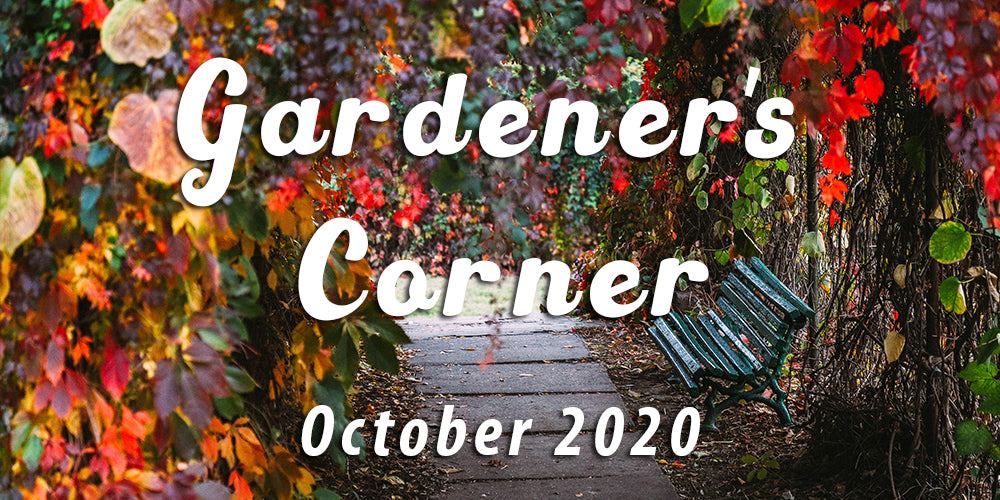“Season of mists and mellow fruitfulness,
Close bosom-friend of the maturing sun;
Conspiring with him how to load and bless
With fruit to vines that round the thatch-eves run;”
- 'To Autumn', John Keates
Autumn is beginning to approach now. The days are starting to shorten, but that does not mean that our gardens are about to shut down.
The rich and splendid harvest time colours are showing in their full glory. Why not add a wow factor to your garden this season? If you are building a garden that impresses all year around, you simply must plan for the September - November period. Here are some of our favourite shrubs and trees that really show off this time of year.
An Autumnal Palette
All Amelanchier put on their autumn coats. One of the best is Amelanchier lamarckii, a quaint little tree with beautiful orange and red tinted leaves all supported by a winding trunk. In the spring, these little trees will adorn themselves with dainty white flowers.
Gardener's Tip: Amelanchier prefers to be planted in ericaceous soil.

Looking for gold? Cercis Forest Pansy’s stunning autumnal beauty is best shown when sunlight passes through its velvety dappled leaves. This one is hard to beat. In spring, you can expect a blossoming of purple flowers to appear on the branches before the leaves come out.
Tip: Your Cercis Forest Pansy can be pruned after flowering. This tree grows in well-drained soil and loves to be in full sunlight.

Acer’s Japanese Maples are grown with autumn in mind, their leaves turning a cavalcade of autumn colours from pinks to purples, and from yellows to vibrant reds. Introduced to England from Japan in 1820, these elegant trees can potentially live up to a hundred years if grown in a good environment.
Tip: If you are looking to bring out their best colour, plant in ericaceous compost either in a pot or the ground.

Seasonal Fruits
Autumn would not be the same without berries - not only do they help our wildlife through the season, but they also inspire us with a wonderful array of colours and culinary treats.
Perhaps you will grow a Rowan Tree and make Jelly from the berries each year?
A particularly beautiful type of Rowan is the Sorbus ‘Autumn Spire’, which gives us clusters of bright lemon-yellow berries, creating a spectacular contrast with the crimson tints of its autumn leaves. Given its columnar habit, it really makes an excellent choice for smaller gardens. Remember - different Sorbus varieties grow a different assortment of coloured berries, from vermillion red through to orange and yellow

Another tree that fruits and flowers in an array of colours and sizes is the Crab Apple, it is one of the most diverse trees in any garden and will grow in any soil. Malus ‘John Downie’ has large pear-shaped orange and red fruits that are ideal for making Crab Apple Jelly.

Rowan Berry & Crab Apple Jelly Recipe
Ingredients:
Crab Apples
Rowan Berries
Sugar (Caster / Granulated)
A cheesecloth / muslin bag
A small saucer (to test the jelly)
Glass jars for bottling
Method:
-
Fill a saucepan half with ripe rowan berries, and half with crab apples – there is no need to peel or remove the stalks.
-
Cover the fruit with water and bring to the boil - Just simmering until the fruit is soft.
-
Take the berries and apples and place in a muslin bag to strain them, allowing the juice to drip through into a large bowl. This can take several hours so leaving this to strain overnight is ideal. (if you force the fruit through, this will create a clouded jelly – patience is key!)
-
The next day, sterilize your saucer, then pop it into the fridge / freezer to cool.
-
Measure the fruity liquid and return it to a large saucepan. Bring it to the boil and add about 1lb of sugar for each pint of liquid.
-
You need to boil this until setting point. If using a thermometer, you need to boil the liquid to reach 105c. You can check the setting point of the liquid after 8 mins boiling by removing a saucer from the freezer and adding a teaspoon of the liquid to the plate. Allow to sit for a minute, then push your finger through the liquid. If it starts to wrinkle, the jelly is ready. If not, return to the boil and try again after another minute.
-
When at setting point, bottle the jelly in the hot sterilized jars.
Evergreen Garden Options
For those that prefer evergreen plants there are some beautiful varieties around.
Pyracantha has vibrant berries in red, yellow or orange will grow well in almost any soil and a great addition to a wildlife garden as the birds love the berries for winter foraging and the bees head for the small white flowers in the summer. This one is best saved for the wildlife the berries are not for human consumption, watch out for thorns.
Nandina a small evergreen shrub which really stands out in the autumn, lance shaped leaves turn brilliant red, orange and purple. Giving a colourful lift to borders.

Climbing Plants
Climbing plants can be used to add colourful height to walls and trellises.
Parthenocissus Henryana turns vibrant coppery red in the autumn giving a stunning display over a wall or a trellis.
Hydrangea petiolaris will turn a soft butter yellow, both of these are deciduous plants. For an evergreen climber Trachelospermum Jasminoides will hold on to its leaves, but a beautiful red/purple flush will appear on the leaves as the daylight hours shorten. Come summer white star shaped flowers appear filling the air with fragrance.


